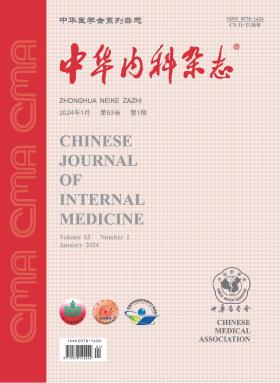【帕金森病患者胃肠道症状及相关因素分析】。
摘要
目的:观察帕金森病(PD)患者胃肠道症状的特点,分析不同PD亚型患者胃肠道症状的特点。方法:选取2022年11月至2024年3月苏州大学第二附属医院神经内科住院的PD患者297例。采用流口水严重程度和频率量表(DSFS)、帕金森病唾液临床量表(SCS-PD)、流口水评定量表(DRS)、进食评估工具10 (EAT-10)、胃轻瘫主要症状指数(GCSI)和RomeⅣ诊断标准对PD患者的胃肠道症状进行评估。患者根据有无胃肠道症状进行分组。此外,根据病程(≤2年、2-5年、5-10年和bbb10年)和运动症状亚型[震颤显性(TD) vs姿势不稳定和步态困难(PIGD)]对患者进行分层。组间差异采用单因素方差分析和logistic回归分析,临床症状间相关性采用Spearman相关分析。结果:PD患者平均年龄67.0岁(60.0岁,72.0岁),男性161例(54.2%)。PD合并胃肠道症状的发生率由高到低依次为便秘(191例,64.3%)、流涎(155例,52.2%)、胃轻瘫(93例,31.3%)、吞咽困难(68例,22.9%)。与无胃肠道症状的PD患者相比,有症状的PD患者在RBD-HK评分[12.0 (5.0,21.5)vs. 5.0 (0.0, 9.0), Z=-3.74, P=0.017], ESS评分[6.0 (2.0,12.0)vs. 3.0 (0.0, 6.0), Z=-3.20, P=0.023]和MDS-UPDRS部分Ⅰ评分[9.0 (5.0,14.0)vs. 5.0 (2.3, 9.0), Z=-3.61, P=0.014]中得分较高。唾液和吞咽障碍的严重程度,以及便秘的发生率,都随着病程的延长而增加。PIGD亚型患者的GCSI评分高于TD亚型患者[0.0(0.0,1.9)比0.0 (0.0,0.0),Z=-3.57, P=0.007]。在整个队列中,唾液、吞咽障碍、胃轻瘫和便秘与H-Y期、MDS-UPDRSⅠ、HAMD、NMSQ和SCOPA-AUT呈正相关;EAT-10评分与MoCA呈负相关(r=-0.171, P0.05);GCSI评分与MMSE和MoCA呈负相关(r=-0.154, r=-0.169),均为p。结论:总体而言,84.5%的PD患者存在一种或多种胃肠道症状,且胃肠道症状的发生率和严重程度随病程的延长而增加。PIGD组胃轻瘫的严重程度高于TD组。所有胃肠道症状评分与H-Y分期和MDS-UPDRSⅠ呈正相关,而GCSI评分与认知评分呈负相关。Objective: To observe the characteristics of gastrointestinal tract symptoms in patients with Parkinson's disease (PD) and analyze the characteristics of these symptoms in patients with different PD subtypes. Methods: A total of 297 PD patients who were admitted to the Neurology Department of the Second Affiliated Hospital of Soochow University from November 2022 to March 2024 were enrolled. The gastrointestinal symptoms of PD patients were evaluated using Drooling Severity and Frequency Scale (DSFS), Sialorrhea Clinical Scale for Parkinson's disease (SCS-PD), Drooling Rating Scale (DRS), Eating Assessment Tool 10 (EAT-10), Gastroparesis Cardinal Symptom Index (GCSI), and Rome Ⅳ diagnostic criteria. The patients were grouped based on the presence or absence of gastrointestinal symptoms. Additionally, they were stratified according to disease duration (≤2 years, 2-5 years, 5-10 years, and>10 years) and motor symptom subtype [tremor-dominant (TD) vs. postural instability and gait difficulty (PIGD)]. One-way ANOVA and logistic regression analysis were applied to examine between-group differences while Spearman correlation analysis was employed to assess correlations between clinical symptoms. Results: The average age of the patients with PD was 67.0 (60.0, 72.0) years, and 161 (54.2%) were male. The incidence of PD combined with gastrointestinal symptoms was, in descending order: constipation (191, 64.3%), salivation (155, 52.2%), gastroparesis (93, 31.3%), and dysphagia (68, 22.9%). Compared with PD patients without gastrointestinal symptoms, those with symptoms had higher scores in the RBD-HK [12.0 (5.0, 21.5) vs. 5.0 (0.0, 9.0), Z=-3.74, P=0.017], ESS [6.0 (2.0, 12.0) vs. 3.0 (0.0, 6.0), Z=-3.20, P=0.023], and MDS-UPDRS Part Ⅰ [9.0 (5.0, 14.0) vs. 5.0 (2.3, 9.0), Z=-3.61, P=0.014]. The severity of sialorrhea and deglutition disorders, along with the incidence of constipation, all increased with longer disease duration. Patients with the PIGD subtype had higher GCSI scores than those with the TD subtype [0.0 (0.0, 1.9) vs. 0.0 (0.0, 0.0), Z=-3.57, P=0.007]. Across the cohort, sialorrhea, deglutition disorders, gastroparesis, and constipation were positively associated with the H-Y stage, MDS-UPDRS Ⅰ, HAMD, NMSQ, and SCOPA-AUT; EAT-10 scores were negatively correlated with MoCA (r=-0.171, P<0.05); and GCSI scores were negatively correlated with MMSE and MoCA (r=-0.154, r=-0.169, both P<0.05). Conclusions: Overall, 84.5% of the patients with PD had one or more gastrointestinal symptoms, and the incidence and severity of gastrointestinal symptoms increased with disease duration. The severity of gastroparesis was higher in the PIGD group than in the TD group. The scores of all gastrointestinal symptoms were positively correlated with the H-Y stage and MDS-UPDRS Ⅰ, while the GCSI scores were negatively correlated with the cognitive scores.

 求助内容:
求助内容: 应助结果提醒方式:
应助结果提醒方式:


